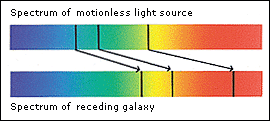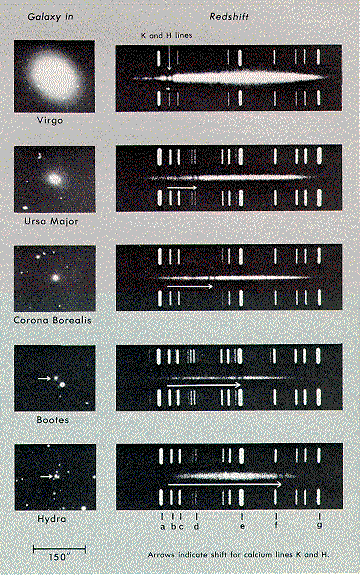 |
Hubble's Law and the Expanding Universe |
 |
Hubble's Law and the Expanding Universe |
Question: How did Slipher and Hubble Accomplish Their Feat?
 |
|

|
|
Following Slipher and Hubble, if we interpret the redshift as due to motion, we can re-state Hubble's Law in its more familiar form. However, note that the redshift measured for distant galaxies is primarily due to the expansion of the Universe, and not to what are called peculiar velocities. An approximation to the redshift, z, driven by the expansion of the Universe is found to be v ~ cz when v is much smaller than cz. Here, c is the speed of light, 300,000 kilometers per second.